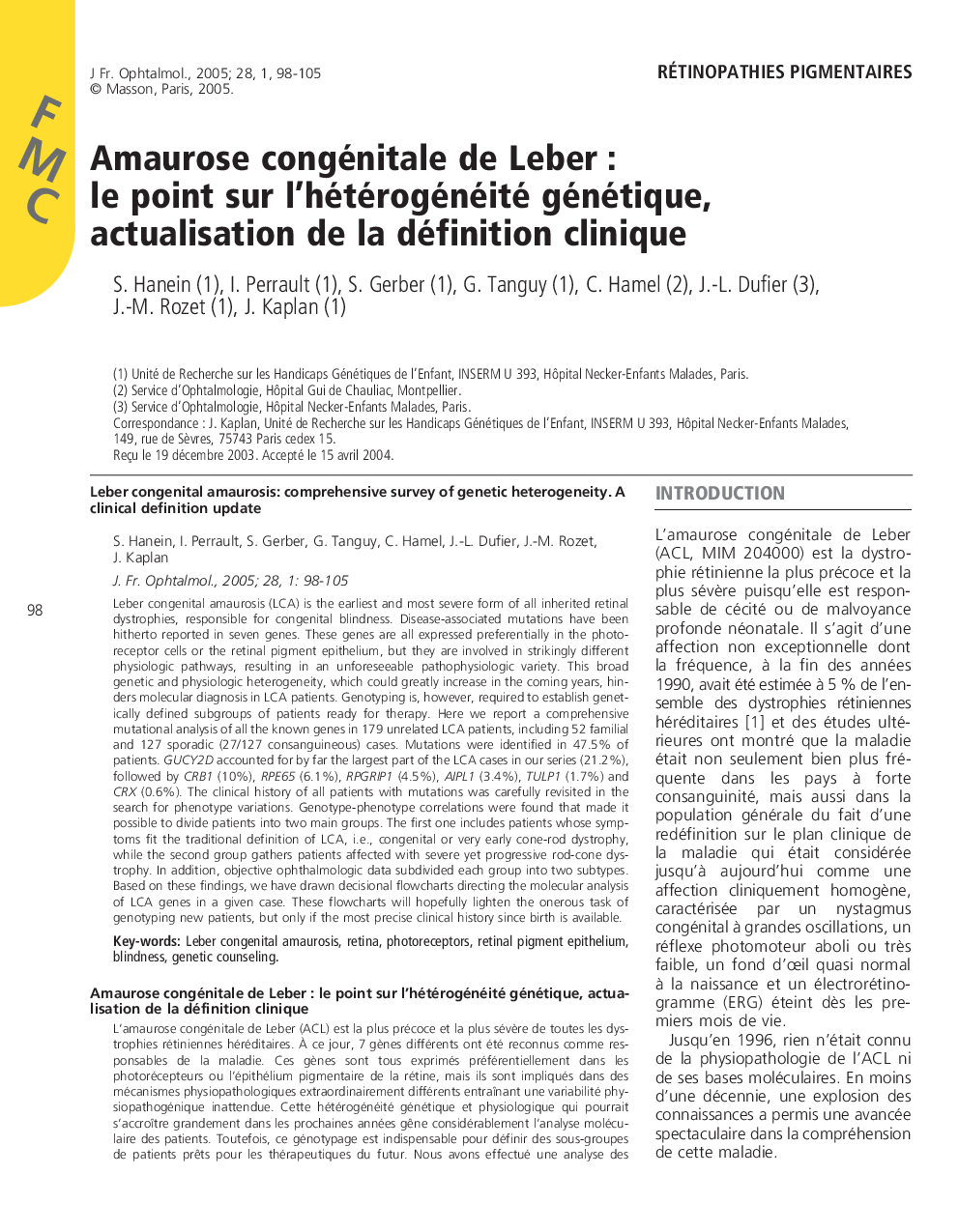| Article ID | Journal | Published Year | Pages | File Type |
|---|---|---|---|---|
| 9345834 | Journal Français d'Ophtalmologie | 2005 | 8 Pages |
Abstract
Leber congenital amaurosis (LCA) is the earliest and most severe form of all inherited retinal dystrophies, responsible for congenital blindness. Disease-associated mutations have been hitherto reported in seven genes. These genes are all expressed preferentially in the photoreceptor cells or the retinal pigment epithelium, but they are involved in strikingly different physiologic pathways, resulting in an unforeseeable pathophysiologic variety. This broad genetic and physiologic heterogeneity, which could greatly increase in the coming years, hinders molecular diagnosis in LCA patients. Genotyping is, however, required to establish genetically defined subgroups of patients ready for therapy. Here we report a comprehensive mutational analysis of all the known genes in 179 unrelated LCA patients, including 52 familial and 127 sporadic (27/127 consanguineous) cases. Mutations were identified in 47.5% of patients. GUCY2D accounted for by far the largest part of the LCA cases in our series (21.2%), followed by CRB1 (10%), RPE65 (6.1%), RPGRIP1 (4.5%), AIPL1 (3.4%), TULP1 (1.7%) and CRX (0.6%). The clinical history of all patients with mutations was carefully revisited in the search for phenotype variations. Genotype-phenotype correlations were found that made it possible to divide patients into two main groups. The first one includes patients whose symptoms fit the traditional definition of LCA, i.e., congenital or very early cone-rod dystrophy, while the second group gathers patients affected with severe yet progressive rod-cone dystrophy. In addition, objective ophthalmologic data subdivided each group into two subtypes. Based on these findings, we have drawn decisional flowcharts directing the molecular analysis of LCA genes in a given case. These flowcharts will hopefully lighten the onerous task of genotyping new patients, but only if the most precise clinical history since birth is available.
Keywords
Related Topics
Health Sciences
Medicine and Dentistry
Ophthalmology
Authors
S. Hanein, I. Perrault, S. Gerber, G. Tanguy, C. Hamel, J.-L. Dufier, J.-M. Rozet, J. Kaplan,
